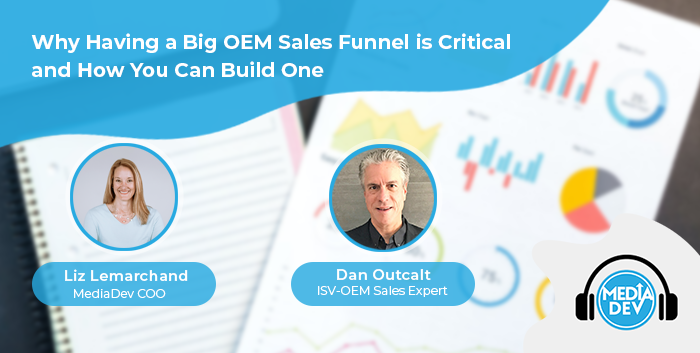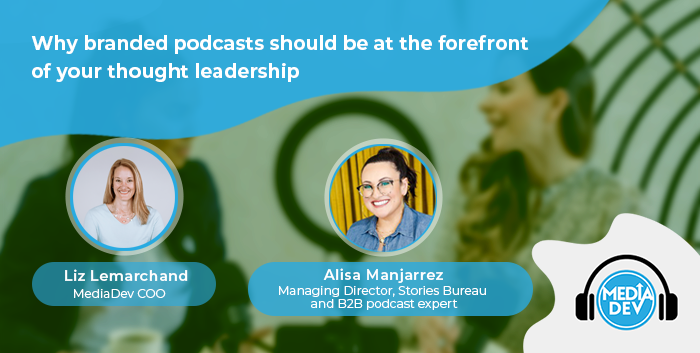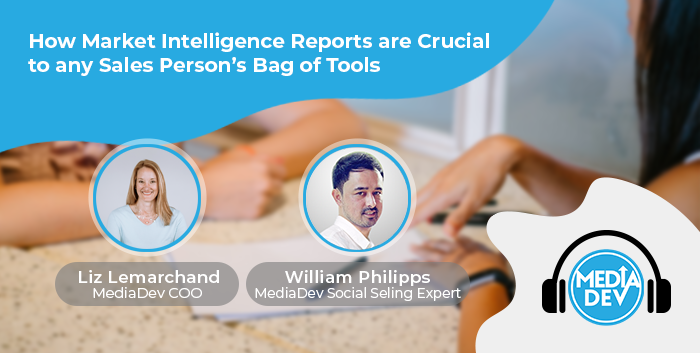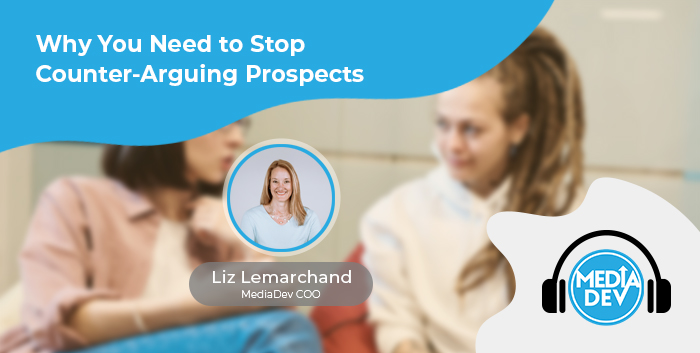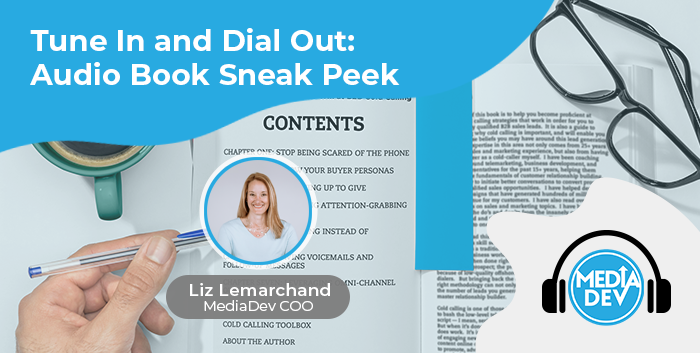View on YouTube here:
1. What are some things to keep in mind when you plan an online event?
The first step is always to define a clear strategy. Define a roadmap in order to decide when a webinar can be used as a strategy to join your target audience, and when a webinar cannot work properly. Before you schedule a webinar, you need to make a question to yourself: Do I have something to real importance to be said and shared to my audience? If yes, then you can start to define your scenario. On the contrary, if your approach will be like let’s talk for 30 minutes on a camera, I’ll send some gadgets to those who registered and then I’ll call back all the attendees to propose them a demo and/or a one–to–one meeting, it doesn’t work. Lastly, your webinar should not be like a yogurt with a date expiration. With the right strategy, you can promote and be attractive before, during and after with the on-demand version of your webinar. One-size-fits-all messaging doesn’t work, so sometimes it’s better to have several (smaller) webinars on highly specific topics, inviting only the exact target audience that will get the most value out of the event. One-shot strategy normally do not work better.
2. Why is it important to start the planning process early?
Scheduling is key to the success or failure of a webinar. Decide on your key audience. You should already have a pipeline of nurtured prospects available. And those prospects should already be aware of or have some kind of introduction to the brand beforehand so they are not struck with too much surprise once they are contacted with an event invitation. On the other side, this is the best chance to enlarge your database of prospects, and try to be in touch with the right target. If you want to grab the attention of your buyer personas – perhaps he will not join the first but the second webinar – your efforts may be compensated by the third one. Very often, when people have a hard look at their data, they realize that there are gaps: white spaces on job titles, missing emails, absence of opted-in prospects, or that the data is old and may be entirely erroneous. Planning in advance will help you to reduce such gaps.
3. How many weeks prior to the event should you start promoting a webinar?
The ideal time frame is a minimum of four weeks prior the date of the webinar. In four weeks, you have the right time to join your buyer persona to explain why he/she cannot miss this webinar … why in an hour he can better understand your services, your solution, your expertise etc. Calling four weeks prior to the date of webinar allows you to have more chances to ask to your target audience to save the slot for the webinar: “I’m calling you in advance to be sure that you’re available at this time this day.” On the contrary, if we have only two weeks, we can allocate more resources on a webinar in order to reach an large number of prospects, and probably we’ll be able to be in touch with them even if we only have two weeks, but the big risk in that case is that the prospect can say “Your webinar is interesting, but I cannot join because I have another meeting and/or I’ll be in another webinar.” That is why we suggest to promote the webinar at least four weeks in advance. Send out a series of e-mail invitations to your target audience to “Save the Date”, “Register Now”, “Register Before it’s Too Late”, and of course give them a “Last Chance to Register”. Don’t leave this to the last minute, or else you’ll find that your prospect’s schedules will already be fully booked.
4. What are some of the keys to getting your event to stand out from the crowd?
One thing for sure is a case study. If you have an important success story to be shared … let’s do it. It will require a lot of hard work to create such a case study, but your efforts will be compensated, especially if you are targeting a relevant industry sector. For example, if your target persona produces sweaters and they’ll see that your guest is from a top sweater producer, for sure they will pay attention to your agenda, to the argumentation, and they’ll try to understand what kinds of business pains have been fixed using a specific solution. Highlighting a case study or success story will drive the message home. Inviting industry leaders to contribute is also a great way for you to gain credibility on the topic of choice, and position yourself as a thought leader. Of course, elaborating the actual content for your webinar takes a lot of time and thought, so this critical step cannot be taken lightly.
5. What are some best practices to reduce the dropout rate to be sure that a good portion of registrants actually attend?
In my opinion, two tasks are mandatory and another one is highly recommended. It’s mandatory to send the confirmation email with the link to join the event no later than 24 hours after the prospect has registered (with the link to join the webinar) and a provide a way to add the event to their calendar. Both links must be in the same email message you send upon registration. I see many webinars organizers that send an automatic reply that is too generic, with no link, than reminds only two or three days before the event with the link – in such a case, this mail goes to spam and this prospect will never receive the link and therefore cannot add your event to their agenda.
It’s mandatory to call back those who registered three days prior the webinar date. All the data automation tools are valid, but don’t ignore the value of the human process. This is vital for the success or failure of the webinar. This is not news, of course – everybody can say that they do it. What you probably don’t know is that your reminder call can be really be appreciated; sometimes, it can even be interpreted as a suspicious call. What we do during the telemarketing process to promote the webinar is inform in advance Mr Rossi … that three days before the date, we’ll remind him about the webinar, in order to be sure that he can confirm his attendance, and he’s received the link to join the webinar. You can decide with him (prior to registration) the process so he is fully informed. So it’s not only a reminder, but also a “service call” to be sure that you have the link and that you can confirm etc. Build a relationship with your prospect from the first call to imply that “I’m here, and do not hesitate if you need more information”.
6. Why is post-event follow-up important and how should it be done?
Recording your webinar is a must. As I said at the beginning, your webinar isn’t like a yogurt. Not only does it give you the ability to create valuable gated content for your website, but it also gives you the perfect opportunity to follow up with your event no-shows. For any online event, you will always have a certain number of last minute dropouts. That does not mean, however, that those prospects have completely lost interest; it usually means that an emergency came up at the last minute that prevented them from attending. Having on-demand content that you can leverage to continue the dialogue with those prospects will help you generate additional leads into your pipeline. Your post-event follow-up should include next steps for both the no-shows and the attendees, so that you can continue to exchange with those prospects, educate them further about your offer and push them down the sales funnel so that they turn into sales.
7. What other advice would you give to people who are thinking about how to make their online events better this FY year?
The conference sector is in a crisis because of Covid-19. People will come back to [physical events], but it will take time and patience. Fortunately, webinars are the digital alternative to those live events. They will be an important pillar to build your business in 2021. Hosting online webinars in order to generate leads is a highly effective tool (if it’s done right), and it is also a ton of work. So invest your time, efforts and resources to plan it, keeping in mind all the points discussed in this podcast and, of course, feel free to buzz me if you need our support to promote your next webinar.



